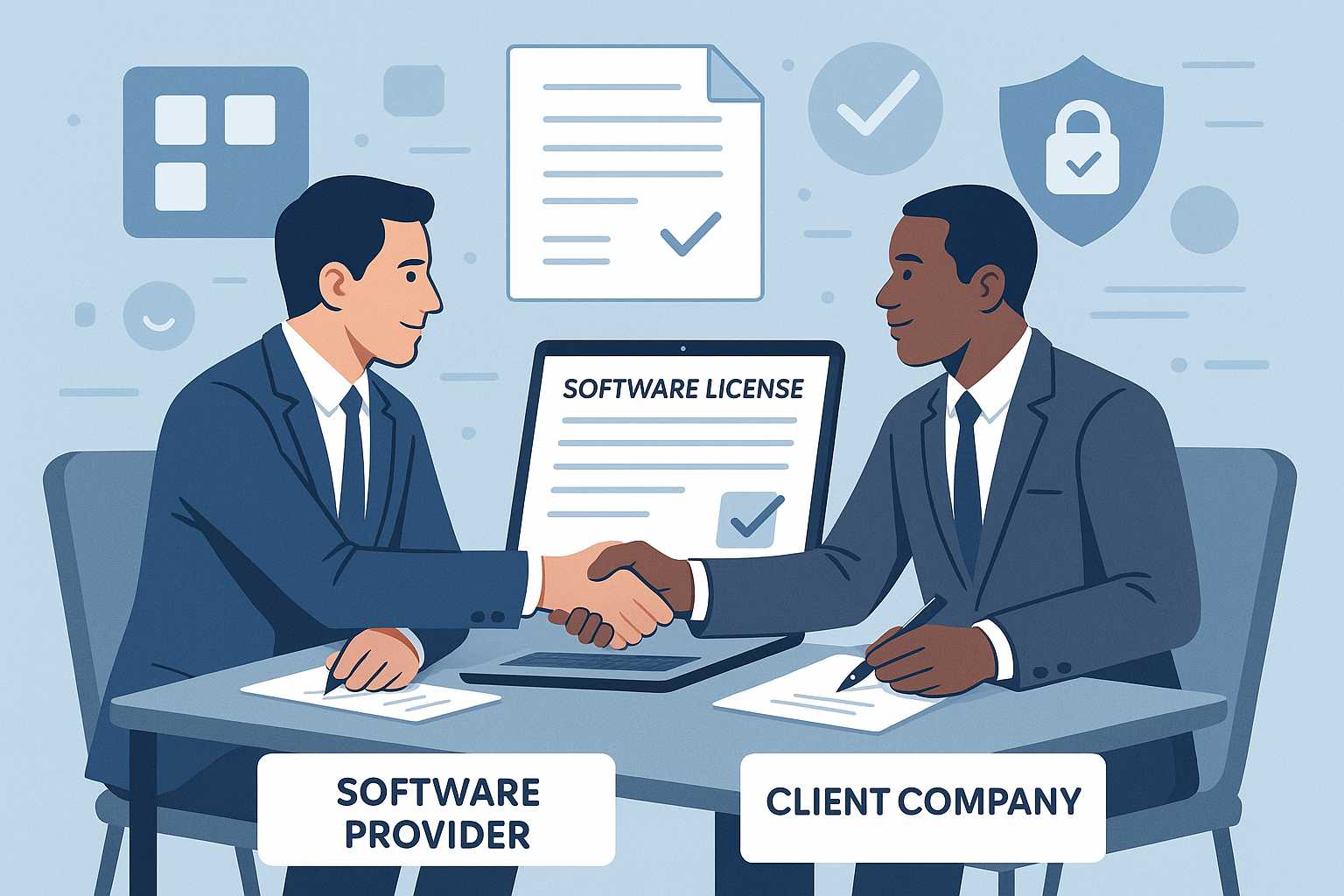Entering into a business-to-business (B2B) software licensing contract requires careful planning, clear communication, and meticulous documentation. A well-structured agreement is vital to protect both the licensor (provider) and the licensee (user), ensuring a smooth commercial relationship and reducing legal risks. Here’s a step-by-step guide to navigate the process successfully.
Step 1: Define the Scope and Purpose
Begin by identifying what software is being licensed and its intended use. Specify:
- The exact product (including version numbers, modules, and features)
- Permitted uses (internal business use, client-facing, etc.)
- Number of users/seats or installations
- Geographic boundaries
- Any restrictions (e.g., no re-sale or redistribution)
Step 2: Choose the Licensing Model
Select a model suitable for both parties, such as:
- Perpetual License: One-time payment with ongoing rights
- Subscription/SaaS: Recurring fees for access/use
- Metered/Usage-based: Fees based on volume or frequency
Clarify how fees are calculated and whether future software updates or enhancements are included.
Step 3: Address Intellectual Property (IP) Rights
Spell out who owns the IP and what rights are being granted. Typically, the licensor retains IP ownership while granting the licensee limited, revocable rights to use the software as specified.
Step 4: Agree on Support and Maintenance
Standard clauses should cover:
- The scope and availability of technical support
- Regular maintenance and updates
- Response times for issue resolution
Step 5: Ensure Data Privacy and Security Compliance
Particularly with SaaS and cloud-based software, confirm how sensitive data will be handled. Consider:
- Compliance with GDPR, CCPA, or other applicable regulations
- Data breach notification protocols
- Security certifications and measures
Step 6: Negotiate Warranties, Indemnities, and Limitations of Liability
Both sides must discuss:
- Performance warranties (that the software works as described)
- Indemnities (e.g., protection against IP infringement claims)
- Limits on what damages (direct/indirect) each party might be liable for
Step 7: Clarify Term, Renewal, and Termination Provisions
Outline:
- Initial term and renewal conditions
- Circumstances under which either party may terminate early (e.g., breach, insolvency)
- Obligations upon termination (data return, software deletion, final fees)
Step 8: Draft, Review, and Negotiate the Contract
Now is the time to create the document, ideally using a reputable attorney or legal counsel for both parties. Review all clauses, negotiate any sticking points, and ensure both sides understand their rights and responsibilities.
Step 9: Sign and Implement
Once finalized, signatures from authorized representatives make the contract legally binding. Implement processes for compliance, monitoring, and regular review.
Step 10: Ongoing Management
Maintain open communication to address any disputes or needed amendments and conduct periodic reviews to ensure continued compliance with the agreement.
Conclusion
A well-negotiated software license agreement protects both the licensor and licensee, provides business clarity, and reduces the risk of costly disputes. By following these ten steps, both parties can foster a productive, long-term commercial partnership.


Leave a Reply